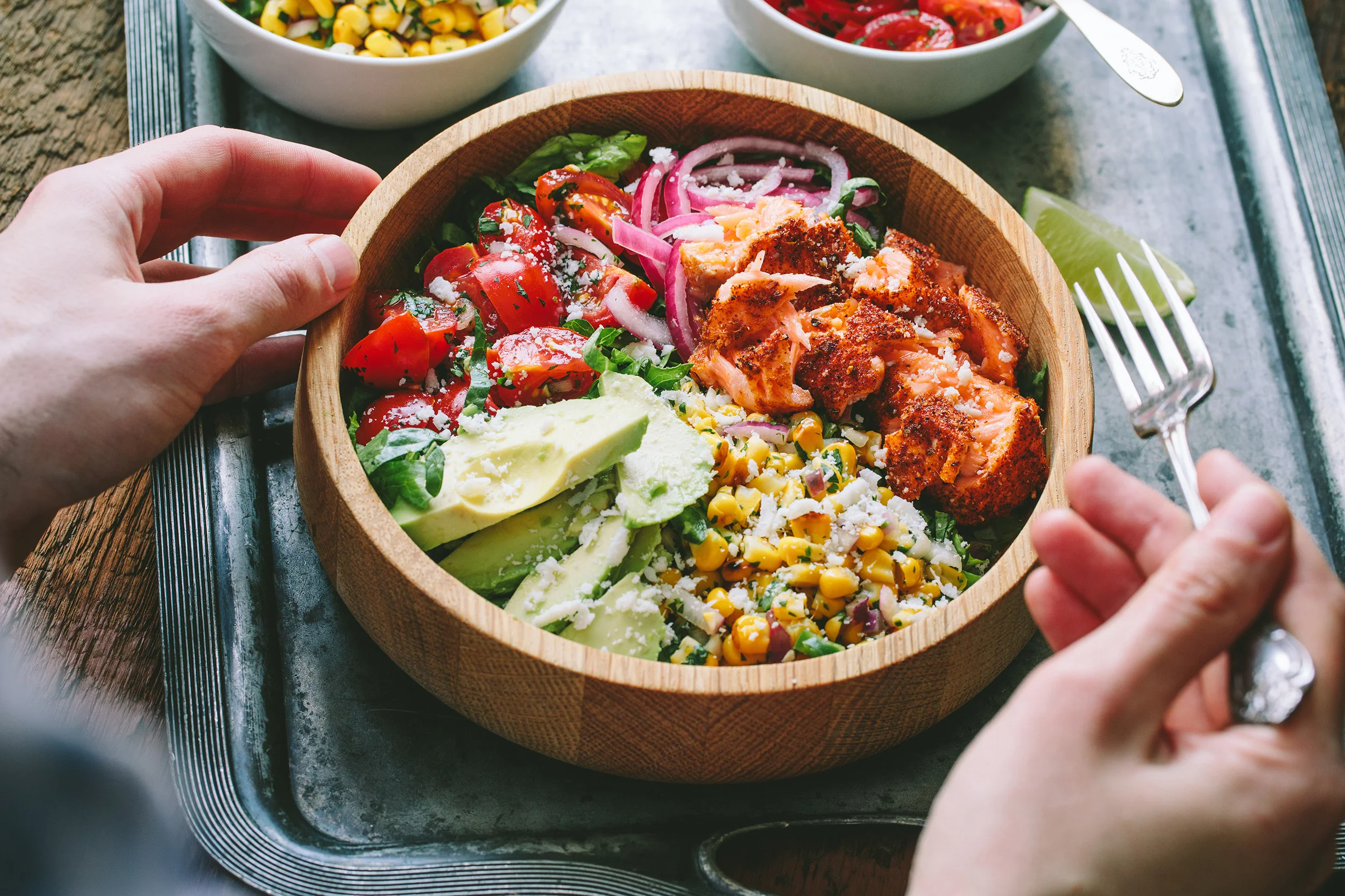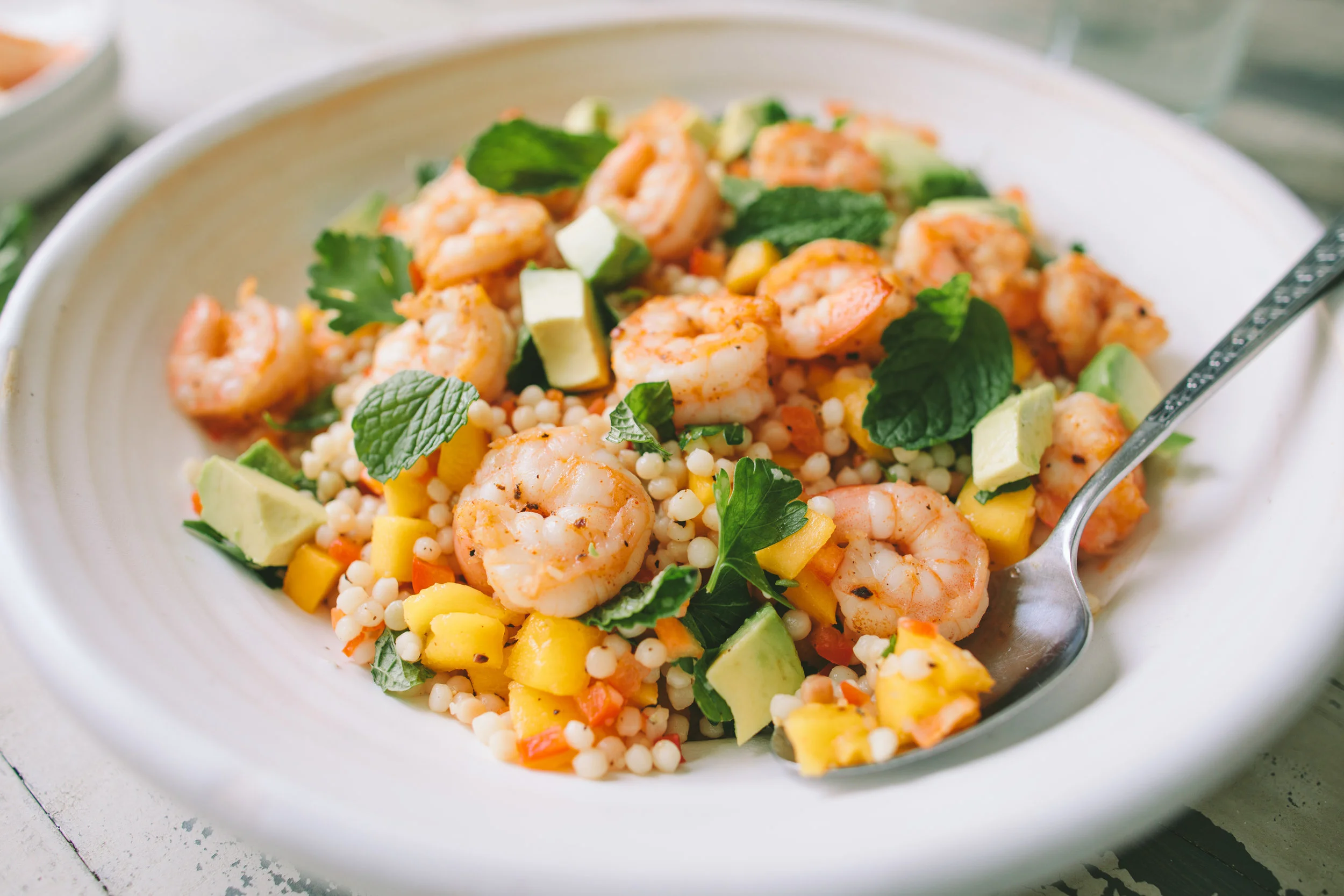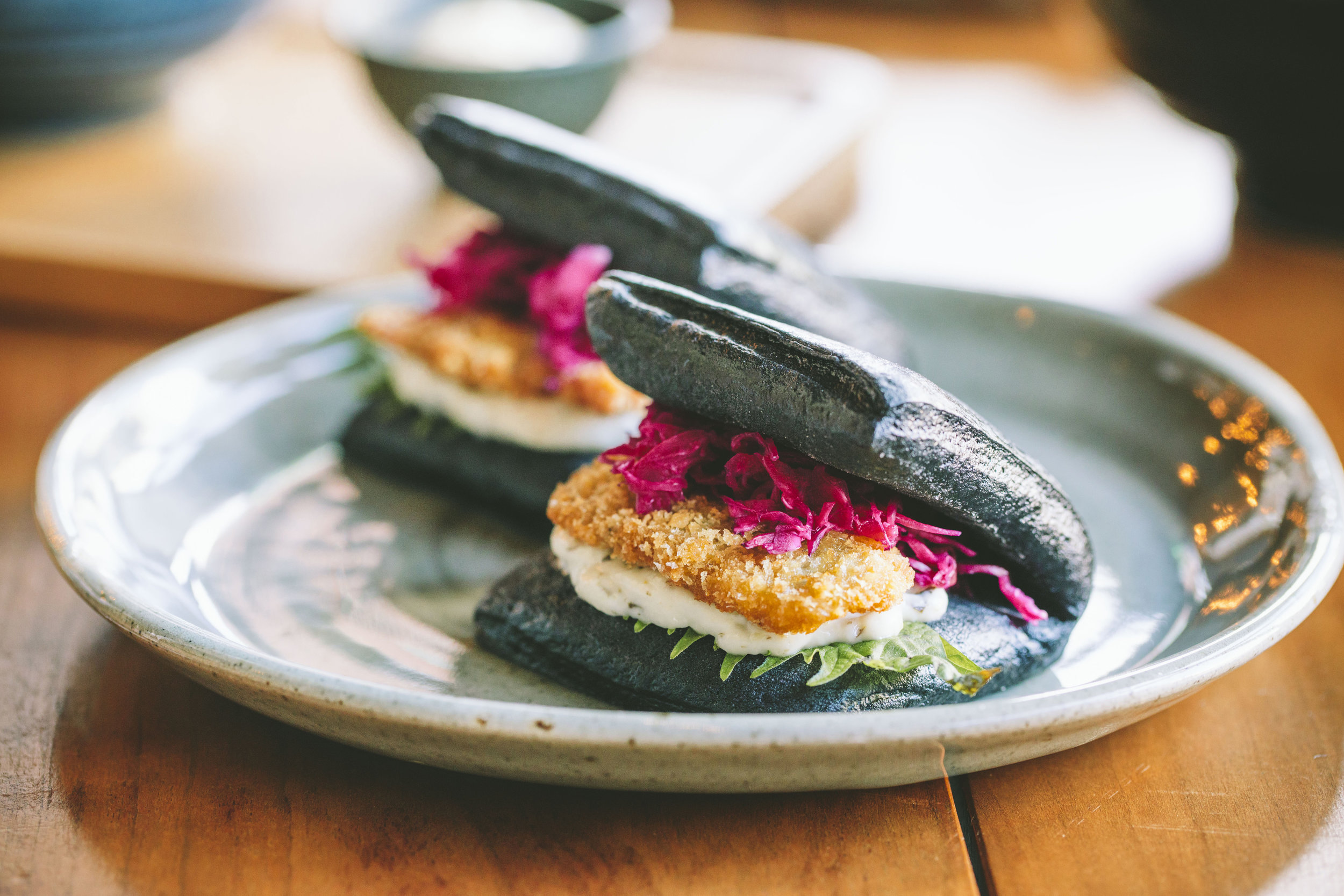Click here to view more Silent Sunday posts! And to see more of my food and beverage photography, head on over to my portfolio site.
PAGU Preview: A Look at the Menu at Tracy Chang's Upcoming Cambridge Restaurant
MEET TRACY CHANG
There are few things that bring me more joy than watching talented, kindhearted friends go on to do incredible things. I've had the pleasure of knowing (and photographing) Tracy and her food since 2012, when she and two other wonderful chefs started Guchi's Midnight Ramen, and then again in 2013 at one of her pop-ups (check out the photos from that here). Since then, I've been following along on her adventures and have wondered when she'd settle down and open her own restaurant. Well, the wait will soon be over when she opens PAGU (the Japanese word for "pug") in Cambridge, MA, later this year. A few weeks ago, Tracy invited me to her apartment to taste (and take pictures) of some of the dishes from her upcoming menu.
PAGU will open at 310 Mass. Ave in Cambridge, MA (in Central Square). Tracy was kind enough to share the inspiration behind each dish. Life experiences, such as her grandmother's Japanese restaurant, Tokyo, and her travels to Spain, have influenced her as a chef, and it shows in her food. I won't say anymore... I'll leave the rest to Tracy:
Squid Ink Oyster Bao + quick pickled purple cabbage + norioli
What is it?
+Squid ink is mixed in to a traditional “bao” aka “steamed bun”, a family recipe.
+Island Creek oyster is coated in panko. Whenever friends or family come to town, I always take them to Island Creek Oyster Bar. If you’re visiting Boston or the Northeast, oysters are a must, and Island Creek is top notch.
+Norioli is a nori + alioli. Alioli is Spanish. Ali = garlic. Oli = oil. It is an eggless emulsion I learned in Spain, adapted with friends at the Alicia Foundation, using a milk-based recipe, and re-adapted in Boston with the addition of nori, Japanese seaweed.
+Rice wine pickled purple cabbage. Quick pickles. Simple and delicious.
What’s the story?
+ With Guchi’s Midnight Ramen, I first began making braised pork belly baos. They were inspired by the ones my grandmother prepared for us growing up. Braised pork belly inside a fluffy bao, with pickled cucumbers, cilantro and peanuts--juicy, crunchy, savory and sweet. I loved them so much that when I visited my cousins in Taipei, they would take me to the nightmarkets and I’d be on the prowl for the best pork belly bao, and have a degustation of baos by the end of the night--my belly was full of pork and bao! Our GMR guests loved the pork belly bao, but as a chef, I recognized success as an opportunity to take risk, experiment and with GMR we were all about prototyping. Coincidentally, our dear friend Barbara Lynch asked us to co-host the industry party for her first annual fundraiser, The Blizzard Bash. If you recall that year in Boston, The Blizzard Bash events were snowed out due to Nemo, all except for the Menton dinner and the industry party. That night, we fed more than a hundred industry friends from across the country (Jamie Bissonnette, Chris Cosentino, Ken Oringer, Gabriel Frasca, Nancy Silverton, David Bazirgan) and even hand-fed Barbara and Daniel Boulud squid ink baos on the line. It was certainly an unforgettable evening.
BLynch: “Damn good bao.”
Boulud: “Magnifique!”
Smoky Cheese Wafflato
What?
+I realized many of my favorite things in life were crunchy on the outside, warm and soft on the inside. A good example: waffles. I love waffles.
Why reinvent something that’s already so good?
+Most people’s taste buds change over time. Recently I’ve been more conscious of my carb and sugar intake, mostly because I don’t have the metabolism of a tri-season athlete anymore, and the carbs and sugars I used to enjoy now make me feel quite sleepy. Food coma is no bueno when I have afternoon meetings and I can’t possibly be the only symptomatic. The last thing I want to do is induce food coma across Cambridge; at the core of PAGU’s ethos is how we make people feel before, during and after their PAGU visit. I wanted to reinvent the waffle so we could all have more than one wafflato without the sleepy side effects. I wanted something that was wholesome in its definition, made from whole foods, i.e. potatoes instead of flour, hence ‘wafflato’. Channeling my days at Harvard Science + Cooking and the food science wannabe inside of me, I began to tinker with tradition. I created my twist on traditional french pâte a choux (the base for eclairs, chouquettes, and “cream puffs”), using Spanish olive oil. I whipped this with roasted, baby creamer potatoes (skin on!), and stuffed the middle with smoked mozzarella and fontina cheeses and voilà, Smoky (and stretchy!) Cheese Wafflato!
Wafflato in Cambridge?
+Living in Cambridge and speaking with folks working in the neighborhood or walking down the street past PAGU, I recognize the on-the-run lifestyle many of us lead. We shouldn’t miss meals or eat terribly because we live life on-the-run. I wanted to create something delicious, warm and savory, that someone could pop in and enjoy on-the-run whether it’s breakfast, lunch, snack, or dinner. Go Wafflato!
Ikura + Avocado Toast
In search of the perfect ikura recipe?
+Having trained with Japanese, French and Spanish chefs, and scientists, I often can’t help but seek ‘the best’ recipe, technique or “porque” aka “why?” behind dishes. When I eat something and it transports me to another time, place or have an “olala” life-changing moment of “the best ____ I ever ate”, I question, “why” and “how” that food evoked those emotions. Those moments also allow me to memorize very specific details not only about the food, but about the entire experience.
So what’s the story? When was the ‘olala’ moment?
+Years ago, I once had the best ikura in LA at Urasawa, a renowned kaiseki restaurant. One of the first dishes to come out was a sake cup full of shiny, briny ikura. It looked like an ikura jackpot! And then, when you delicately scooped up the orange pearls, you’d reveal the edamame tofu, perfectly steamed, perfectly smooth. Simple and very satisfying. The ikura was unlike any other ikura. It wasn’t too salty, the membrane of the ikura was so thin that they burst upon the slightest pressure of closing your mouth, tongue to roof of mouth. You could taste the subtle marinade, the flavors of dashi, shoyu, sake. A young sparkly-eyed chef at the time, I spent the rest of the evening chatting up chef Hiro at the 12-seat counter, about ikura, technique, surfing...it was certainly an unforgettable experience.
Work in progress?
+Since then, I’ve been working and re-working my own recipe for marinated ikura. I talk to strangers (usually chefs) about their methods, I try to decipher Japanese recipe books (with photos) and blogs. I love tasting trials side-by-side, and reminding myself that my work, which is not work per se, since I enjoy it so much, is never done.
Inspired to create my own and share?
+If I can have those olala moments, perhaps so can others. I’m inspired and enabled by experiences like these and by talented mentors, that I find the most joy in passing it on to others, feeding them food, knowledge and hopefully a good story.
Txipirones de Gandarias (Baby Squid Tentacles + Caramelized Onions)
Spain on my mind:
+One of my favorite pintxos bars in San Sebastian is Gandarias. It’s on a corner of one of the busiest pintxos streets, Calle 31 de Agosto. The place is always bustling. Even when most places close on Sunday or Monday, Gandarias stays open. It’s a reliable gem for me, and this is the dish I would always order there, with a glass of txakolí.
Txipirones?
+Txipirones = baby squid. They are native to the waters off the coast of San Sebastian, and I remember my first time at Gandarias very clearly. It was the night before my first day of work at Martin Berasategui. I didn’t know anyone in Spain yet so I went on a pintxos crawl sola. I walked in to Gandarias because it was busy and full of locals, a sure sign of tasty pintxos. I squeezed in at the standing bar and introduced myself to the bartender. Again, super sparkly-eyed young cook, peering over a tall bar, speaking who-cares-if-it’s-broken-Spanish to the Basque gent. Before all else, he poured me a glass of txakolí and explained how it was a local grape, local wine and I must try it. It would go with everything. Then he just did all the ordering for me. Since pintxos are small, two or three bite items, he just had a steady stream for me. And the plate of txipirones con cebolla confitada, was magic. So simple, so fresh.
San Sebastian to Boston?
+I was impressed at not only how delicious everything was, but at how friendly the bartender was to this complete stranger. I looked like no one else in the room. It was January 2011 so there were few tourists, and even fewer Asian-American tourists. I will never forget the way he made me feel, like a childhood friend he’d known for years, and of the patriotism, enthusiasm, and warmth he radiated. He knew all about where the txipirones were from, how they were caught, and that knowledge extended from txipirones to txakolí wine to boquerones...Now that I think about it, I think, if I can’t bring him to Boston, I can at least bring him back in the form of this dish, and how we serve it with his same spirit and pride at PAGU.
Chawanmushi “Steamed Egg”
Cha-wah-moo-shee?
+My grandmother served this classic Japanese dish at her restaurant, Tokyo, and I can still taste it. A soft, pillowy steamed egg with surprise after surprise as you scoop deeper in to the small cup of seafood wonders. Hers was a mixture of egg, katsuobushi dashi, gingko, shrimp, shiitake and fish cake. This is my homage to grandma, where I do a dry shiitake and dashi stock, and mix in dried, baby shrimp, sliced shiitake and chives. Depending on my mood, I’ll do a version with crab, or ikura, or fish cake.
Croquetas de Curry Crab
Fond Memories of Spain:
+In Spain, these are made with a bechamel (roux of flour and milk), coated with breadcrumbs, and fried. Every traditional tapas or pintxos place has them, and the fillings are typically bacalao, jamon, or queso. We made them for weddings at Restaurante Martin Berasategui and there would always be extras. I always happily volunteered to be QC (quality control).
How about Japan?
+Japan has “korokke” which supposedly France introduced to Japan; the Japanese had limited access to dairy and so they substituted potato. During my travels in Japan, I’ve enjoyed flavors including: potato, curry, meat, and crab.
Why at PAGU?
+Croquetas are the ultimate comfort food for all, whether you’re a seasoned traveler or a young child. I wanted to create a snack that everyone could enjoy all the time. In Spain, I’ve even seen croquetas bars that serve just croquetas, but croquetas of all kinds, from the traditional to the wonkier, like morcilla (blood sausage) and txipiron (baby squid). Croquetas exist in varied forms around the world: coxinhas in Brazil, croquettes in France, croquetas in Spain, korokke in Japan, kroket in Indonesia, crocchette in Italy. These are just the ones I’ve tried, but there are more!
Why this flavor?
-As much as I love the traditional bacalao (salt cod) and jamon croquetas, I much prefer a potato-based croqueta, especially this one that incorporates seafood and zest. I think there is a pleasant synthesis of heat, spice and seafood. With the aji panca alioli, I first learned about aji panca (a Peruvian chili sauce) while working at O Ya. We served it with torched Bluefin Chutoro and it was delicious. In this recipe, I blend it into my alioli for a complementary kick with the spices of the curry crab croqueta.





































